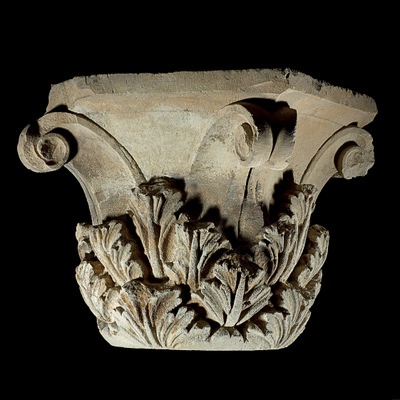The Greek Colony of Aï Khanum
After Alexander the Great`s conquest of Bactria around 328 BC, the region became the eastern outpost of Greek culture in Asia. One of Alexander's successors, Seleucius 1, founded the Greco-Bactrian city of Aï Khanum (“Lady Moon") at a strategic location along the Oxus River, on the frontier with nomadic tribes to the north. Defended by massive mud-brick ramparts more than three miles long, AT Khanum developed into a cultural hub where Greek art merged with local eastern traditions, and over time, a distinctive Greco-Bactrian style emerged.
A chance find in 1961 resulted in the discovery of the ancient city. During a hunting expedition in the region, the late Afghan king Zahir Shah was shown a Corinthian capital - similar to the one in the exhibition (fig. 6) - and recognized its antiquity. Exploration of the area led to the excavation of Aï Khanum by French archaeologists from 1964 to 1978.
They uncovered a city modeled on a Greek urban plan, with a theater, a fountain, temples, tombs for the city’s benefactors, a residential area, and a gymnasium for education and sports. A limestone statue found in a niche at the site probably portrays the gymnasium’s director (fig. 7). Because Aï Khanum also contained a palace, it is thought to have been a royal city (fig. 8)
The Silk Road
is a metaphor for long-distance trade across Asia that developed from c. 300 BC to c. 200 AD. It was not, in fact, a “road" but a collection of land and sea routes linking cities, trading posts, caravan watering - places, and hostels between the eastern Mediterranean and the Chinese frontier. Afghanistan is centrally located along the major routes. Trade goods brought to China included precious metals, coins, glass, and semiprecious stones. Silk textiles, lacquered bowls, and other luxury wares traveled from China to the West. The distances to be covered were so great - and the rigors of travel so dauntin - that only goods that combined small size with very high value could be transported the entire distance.
By the first century AD, long-distance trade across Asia was fully established, as demonstrated by the artifacts from Rome, India, China, Persia, and Siberia found in Afghanistan.




